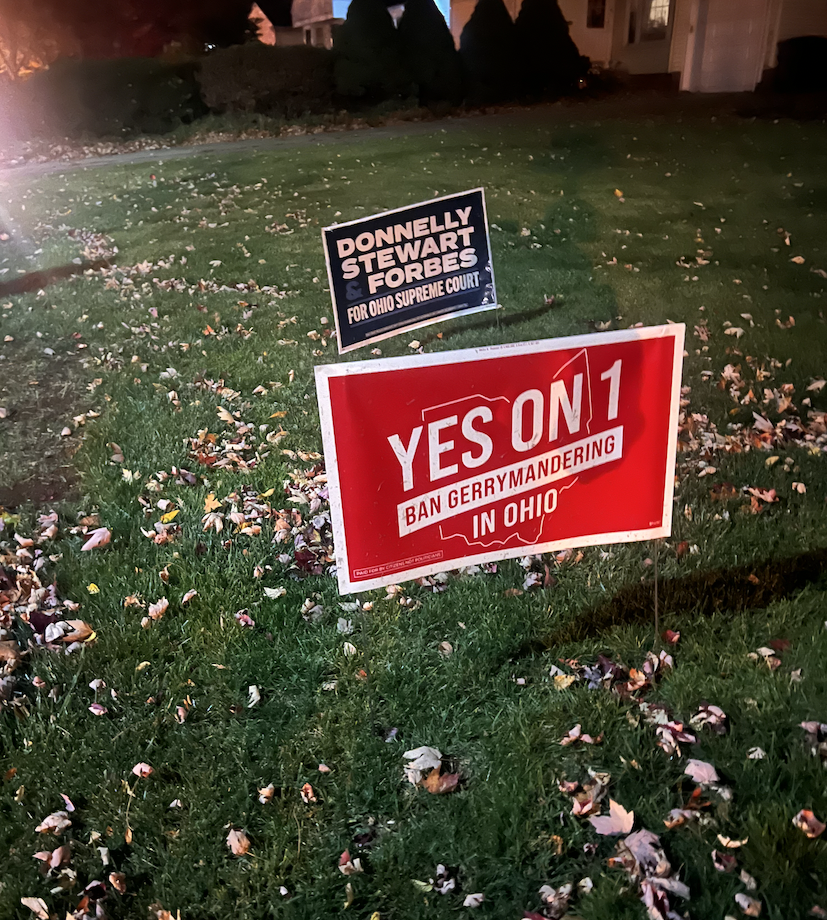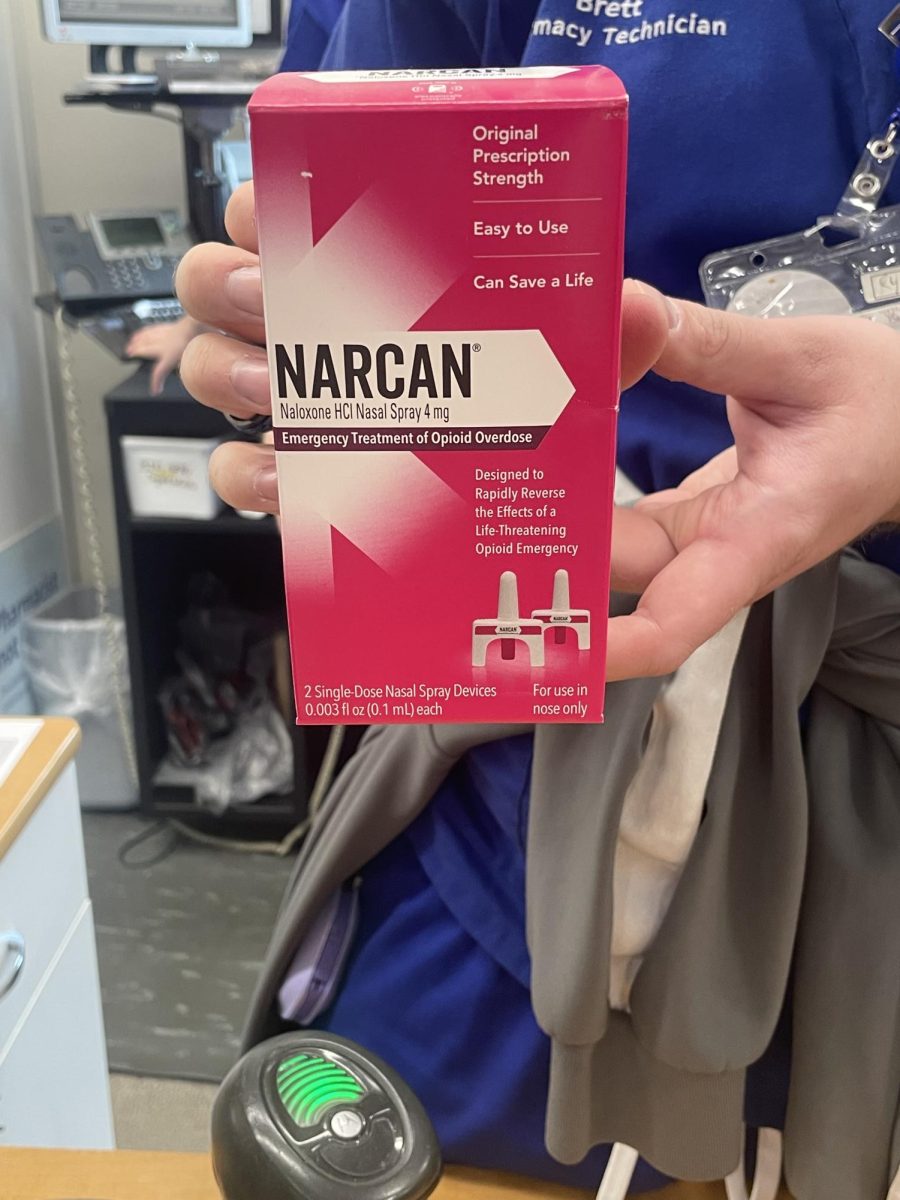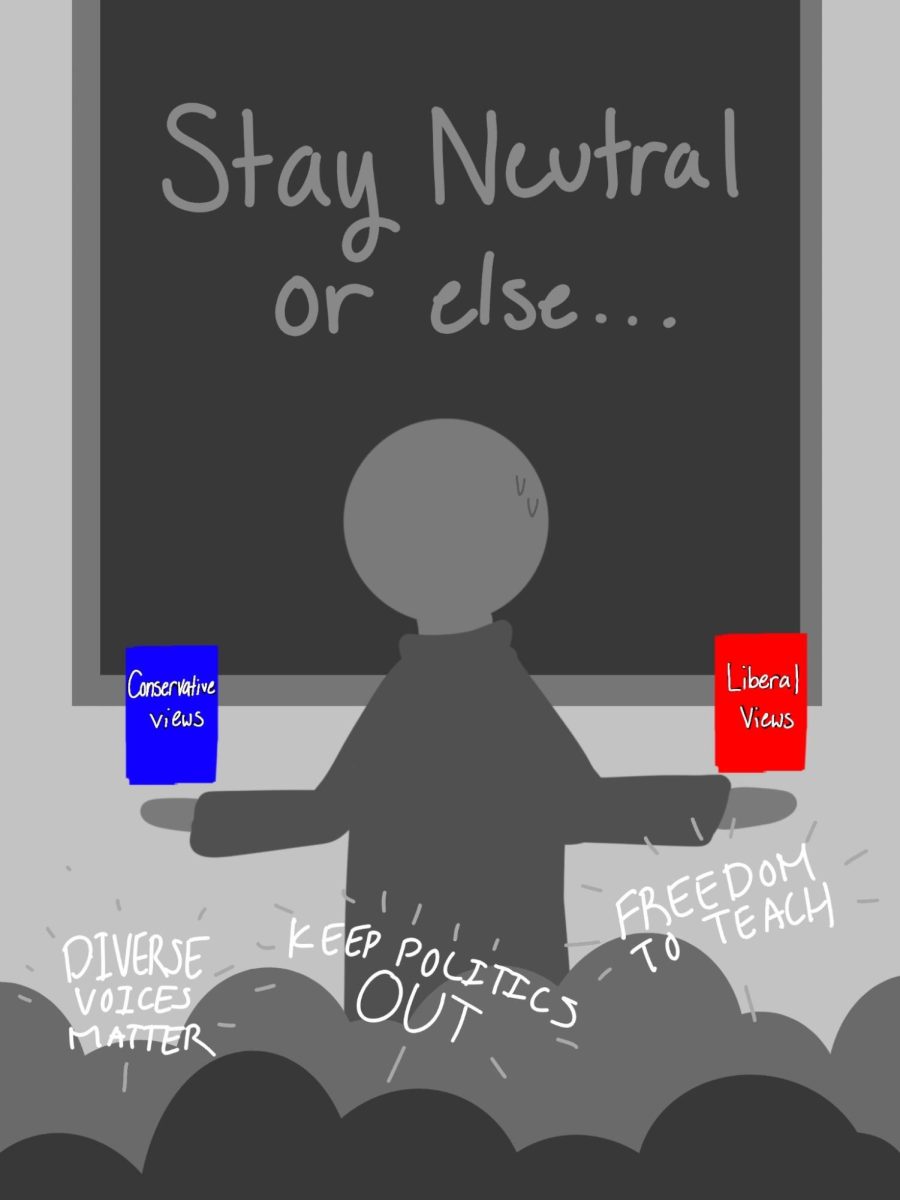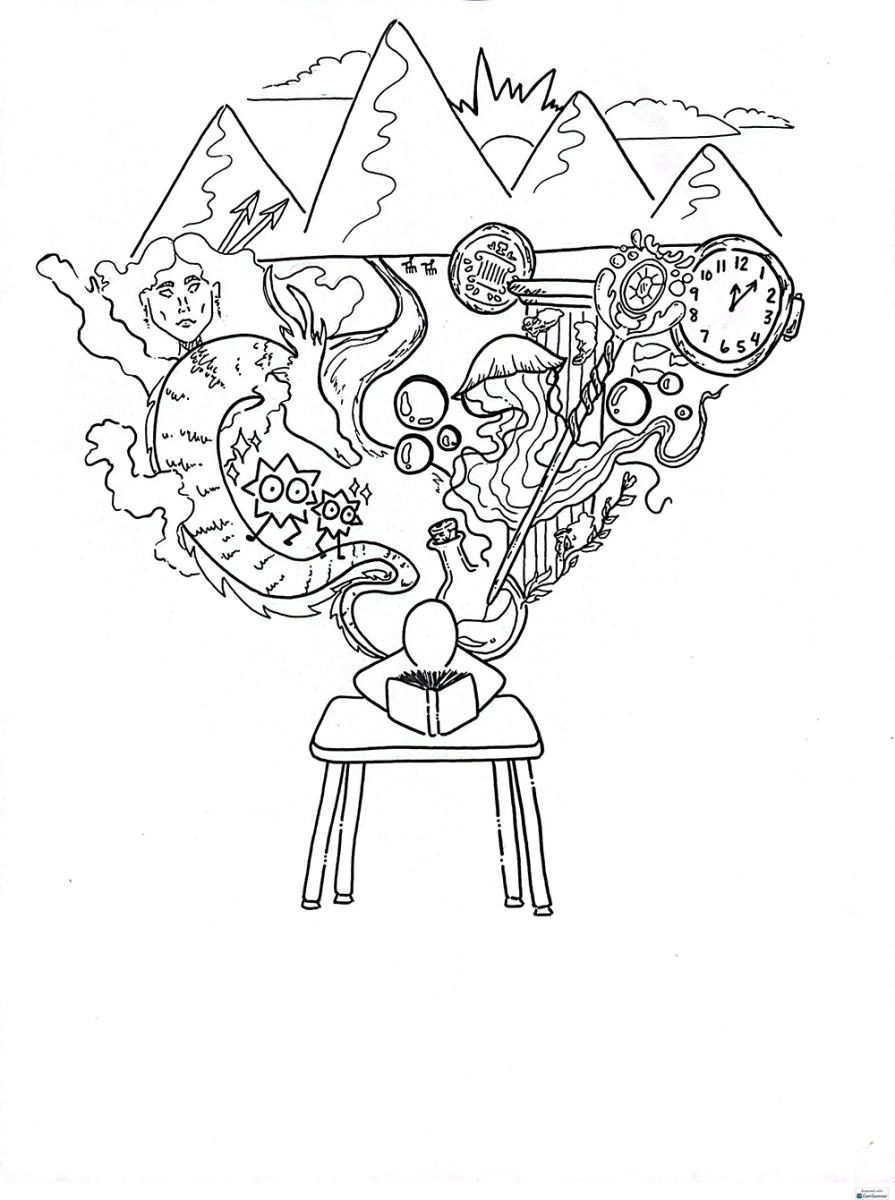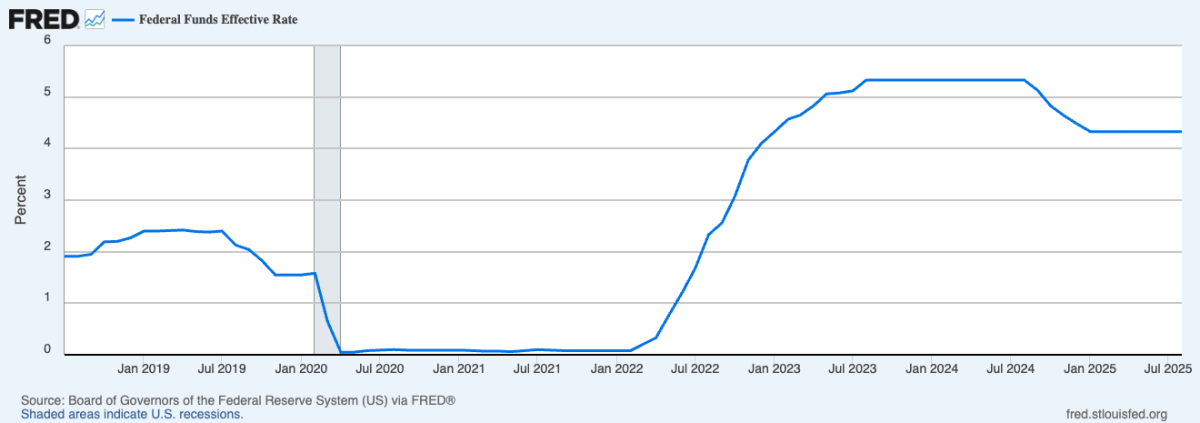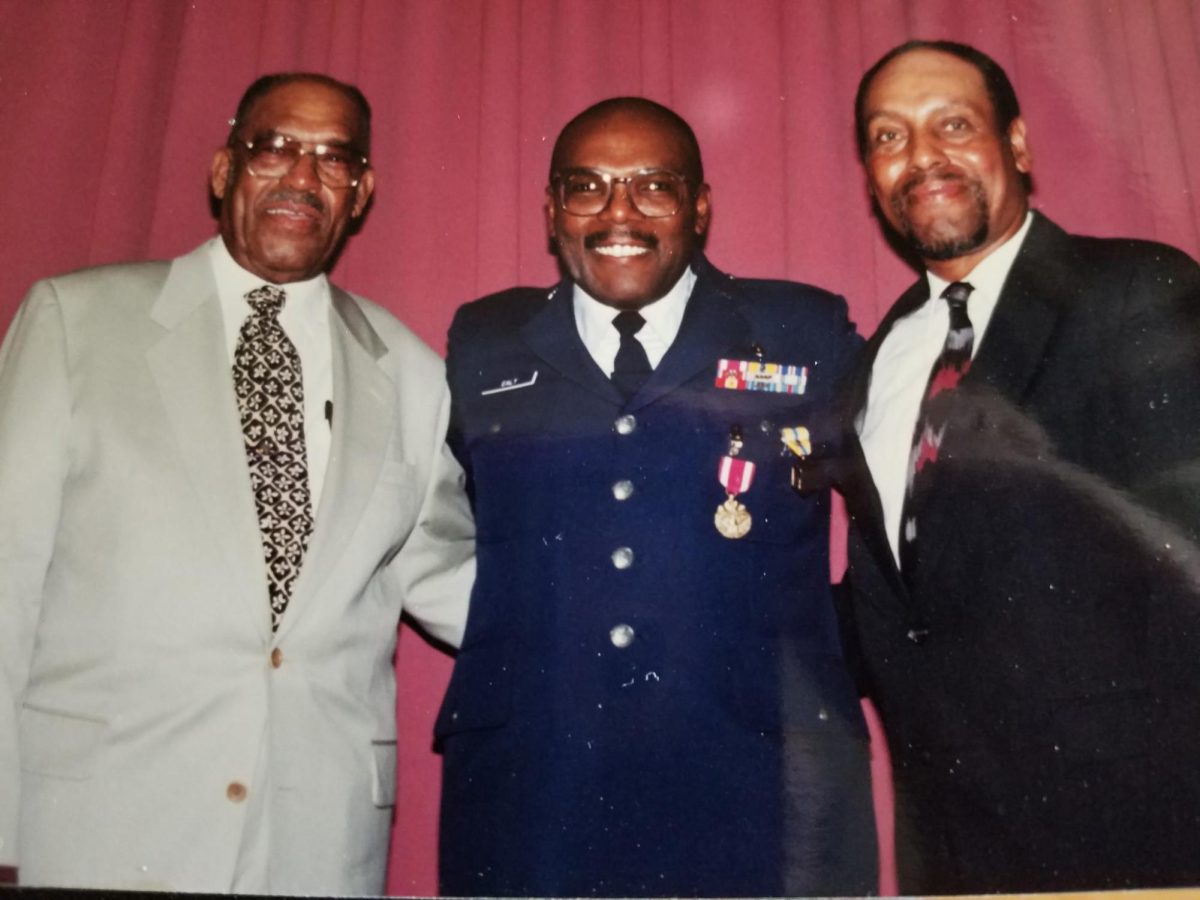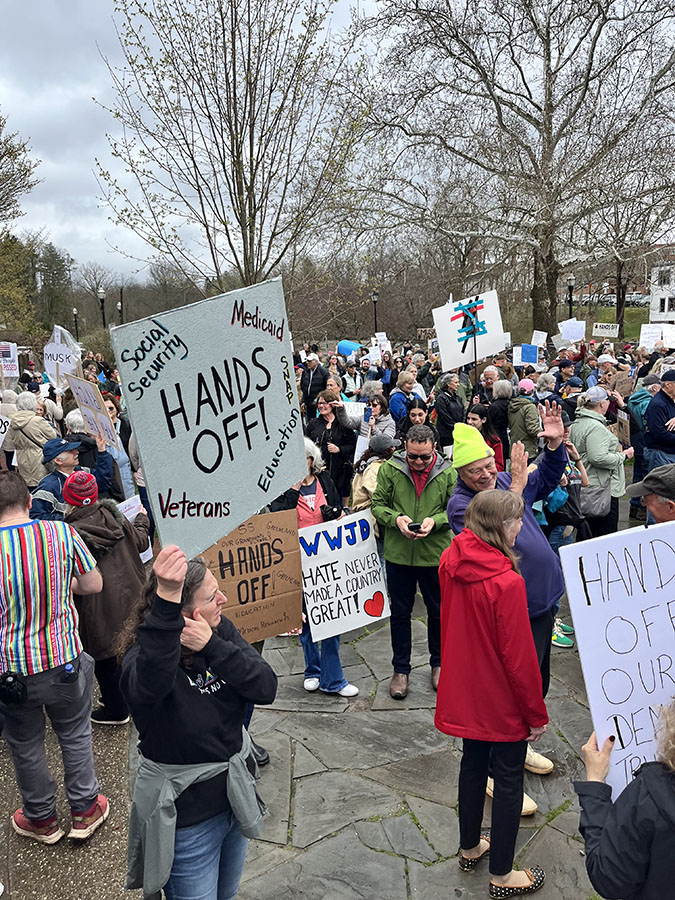If you have driven around in Ohio these past few months, you most likely have seen signs reading “Vote No: Stop Gerrymandering” and “Vote Yes: Ban Gerrymandering.”
At first glance, the two signs appear to have the same goal: ending gerrymandering in Ohio. But they don’t really advocate for the same thing, and if voters are not careful, they could end up upholding our current, very flawed system.
On tomorrow’s ballot, Ohio citizens have a choice to end gerrymandering by voting yes on Issue 1. But what does this mean? Well, the solution is simple and has been done before in states like California and Michigan
Voting yes on Issue 1 should be the choice for anyone who values fair elections, true representation and a more accountable government.
Gerrymandering is a process by which the electoral districts are manipulated to favor one politician or party, essentially allowing politicians to choose their voters instead of voters choosing their representatives.
When districts are gerrymandered, politicians are less accountable to voters because they know they will be reelected, even if they perform poorly, because they are in districts that are made up mostly of citizens who are loyal to their party and unlikely to vote against them.
Gerrymandering also leads to uneven representation. For example, In Ohio, this practice has been so common that the state is widely considered one of the most gerrymandered in the country. Currently in our state, Democrats make up 45% of registered voters but only 30% of the elected legislative seats compared to Republicans who make up 55% of registered voters but hold 70% of elected legislative seats.
The current electoral map in Ohio gives rural voters a disproportionate influence and much more power than those in urban and suburban areas like Cuyahoga County.
Let me tell you about the solution, the Citizens not Politicians campaign, a grassroots coalition that aims to put the map-drawing power in the hands of the people and remove politicians from the map-drawing process.
Issue 1, known as The Citizens Not Politicians Amendment, would create a 15-member Ohio Citizens Redistricting Commission made up of Democratic, Republican, and Independent citizens, five of each, to draw fair voting districts free from political manipulation. Politicians, party officials and lobbyists would be banned from the commission, ensuring an impartial, citizen-driven process.
Opponents of Issue 1 have tried to confuse the issue by suggesting that it actually supports gerrymandering, and Ohio’s Republican Secretary of State Frank LaRose wrote the ballot language in a way that makes it seems to promote, rather than end, gerrymandering in Ohio.
Actually, the amendment would require fair and impartial districts by making it unconstitutional to draw unfair voting districts that discriminate or favor one political party.
A “no” vote would essentially keep Ohio’s current system intact, a system that has repeatedly produced highly gerrymandered districts and undermined fair representation, as Ohio politicians have ignored multiple court rulings declaring their maps unconstitutional.
But if Issue 1 passes, voters can expect improvements to good governance in Ohio.
Jeremy Paris, Principal and Regional lead at the Raben Group, a public affairs consulting firm, currently working to get Issue 1 passed.
Paris explains the short-term effects as follows.
“Let’s say we pass Issue 1 [this] week,” he said. “The implementation starts immediately. They form this commission. There’ll be public comment, because they’ll start writing districts next year that will go into effect for the next time we have a general election in 2026.”
In the long term, Paris says that Ohio’s government will start functioning more democratically.
“You will see a dramatic improvement in the diversity of people that are representing us,” he said. “And you will see more politicians in competitive districts that have to really listen to both sides and have to find moderate solutions. They will have to find common sense. They will just have to work across the aisle.”
Clearly, Issue 1 offers voters a unique opportunity to reshape how democracy works in Ohio.
By voting “Yes” Ohioians can choose a fairer, more transparent process that holds politicians accountable to the people they serve, making sure that every vote truly counts.
So when you head to the polls tomorrow, remember to vote “Yes” on Issue 1.



